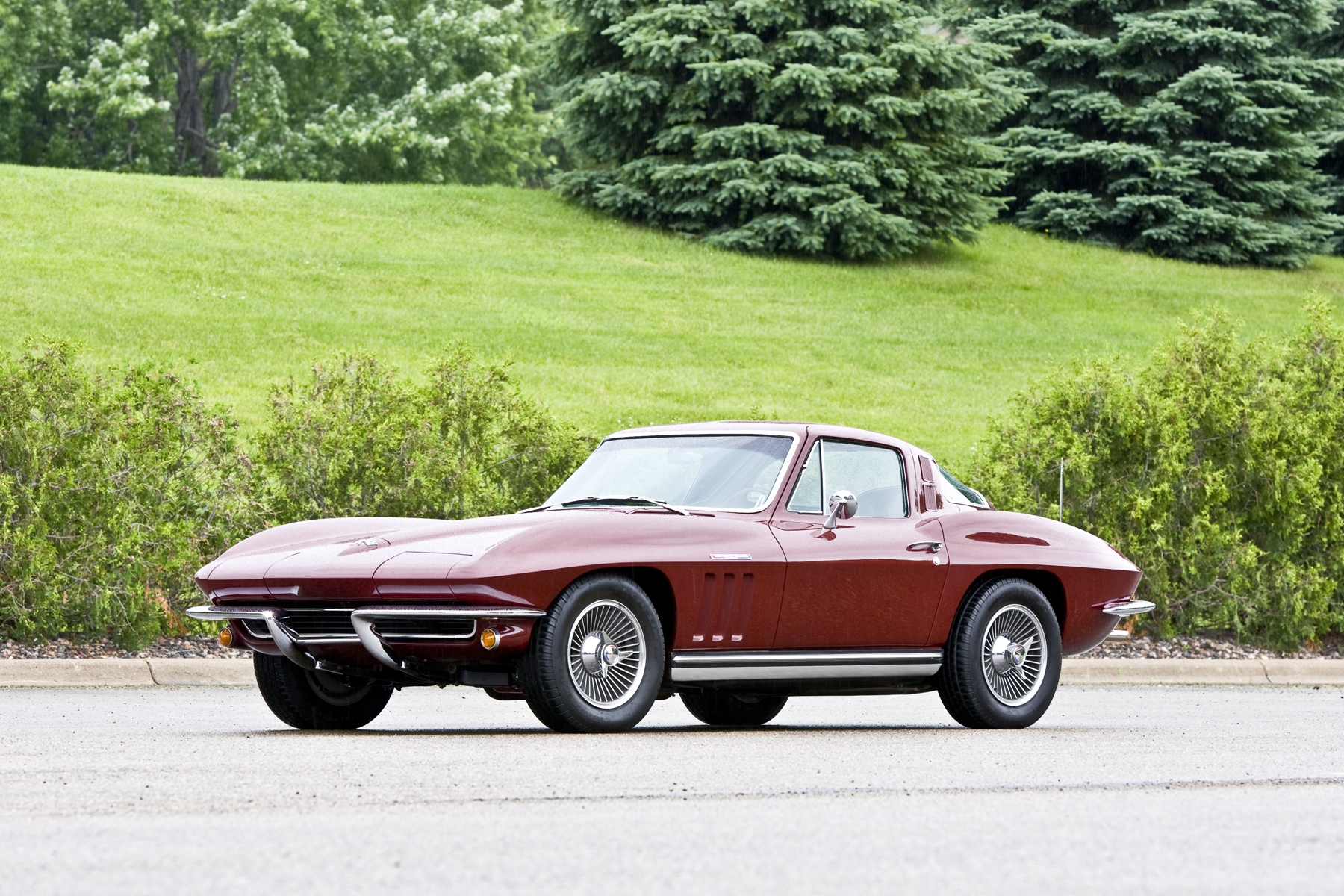SCM Analysis
Detailing
| Vehicle: | 1965 Corvette 327/375 Fuelie coupe |
| Years Produced: | 1965 |
| Number Produced: | 771 fuel-injected cars (23,562 total) |
| Original List Price: | $5,581 |
| SCM Valuation: | $64,000–$121,000 |
| Tune Up Cost: | $150 |
| Distributor Caps: | $19.99 |
| Chassis Number Location: | VIN plate on top of instrument panel at base of windshield |
| Engine Number Location: | Pad on front of block below right cylinder head |
| Club Info: | National Corvette Restorers Society |
| Website: | http://www.ncrs.org |
| Alternatives: | 1965 Chevrolet Corvette 396/425, 1961–1965 Jaguar XKE |
| Investment Grade: | A |
This car, Lot 4, sold for $86,600, including buyer’s premium, at Gooding & Company’s Pebble Beach Auction on Saturday, August 20, 2011, in Pebble Beach, CA.
There is something intriguing about the last cars of a make, model, or with specific options. There is the mystique of knowing there were no more made and no replacements are available. But there is also the practical aspect that the last is often the best of the breed.
That was certainly the case with the 1965 fuel-injected Corvettes. Chevrolet had already rocked the automotive world with the Sting Ray in 1963, a car that Car Life magazine called “a technical tour de force.” But the ’65 edition of the Sting Ray benefited from Zora Duntov’s quest for continuous improvement. Outside, the Corvette shed some of the styling gingerbread of the ’63 car, leaving it a purer form. Inside, the Corvette received upgraded bucket seats and instruments that were easier to read. But the biggest news was hidden under that curvaceous fiberglass.
Out with drums, in with discs
In an era when front disc brakes were just becoming popular on higher-end cars, the ’65 Corvette boasted four-wheel discs. Brakes, even the optional, massive, finned drum brakes, had always been the Achilles heel of the Corvette. But no more. GM’s Delco Moraine division gave the Corvette disc brakes that incorporated the latest in stopping technology, with 461.2 square inches of swept lining, compared with the drum’s 321.
The result, reported Road & Track magazine, was astonishing: “Long ago we gave up (read chickened-out) doing stomp-down, all-out panic stops in American cars, but the Corvette restored our faith to such an extent that we did 0-80-0-80-0 time after time and grew bored, almost, with the ease and lack of fuss with which the car stopped straight and true. No lockup, no fade, no muscle-straining increase in pedal pressure. Just good dependable stops. Wonderful.”
Rochester, refined
At the heart of the 1965 “Fuelie” was an update of the 327-ci engine introduced in the last of the first generation Corvettes, the ‘62 model. This was the second iteration of the Rochester “Ram Jet” injected 283 V8 that debuted in 1957. Designed by John Dolza, the mechanical fuel injection system was created to eliminate the flooding and fuel starvation that occurred in carbureted cars caused by the high G-forces of road racing competition. An additional 10 hp didn’t hurt, either.
Issues that sometimes plagued the original Fuelie, such as cold-starting problems, were gone from the second generation FI, and the 375-hp L84 used on the ’65 Corvette was the ultimate in Fuelie refinement and performance. This was a car that listed for about $5,500 new, yet Car and Driver compared it favorably to the contemporary Aston Martin DB5 and Ferrari 250 GT, which cost more than $12,000 each.
Replacement by displacement
If the fuel-injected Corvette was so great, why did it end? Zora Duntov was as masterful a corporate politician as he was an engineer, but this is one battle he lost. Chevrolet’s new 396-ci “big-block” engine could produce as much as 425 hp at substantially less cost to produce. The accountants didn’t care if Car and Driver said the Fuelies had “a more ‘European feel.’” They were very powerful, but they had a zippy, high-winding, no-flywheel feel to them that the big-block Corvettes lacked. The fuel-injected option cost $538.00, the 396 monster was just $292.60, and I’ll bet there was more profit in the 396 option despite the lower cost. For driving enthusiasts —and collectors — it was the end of an era.
For anyone wanting to own one of these magical Corvettes, this one was a fine choice. This Milano Maroon coupe is downright striking, and it benefited from both complete documentation and an accurate and highly awarded restoration. It is showing its age a bit, but not so much as to hurt its value. But the market for Sting Ray Fuelies — except for the 1963 Z06 cars — just isn’t there, at least not compared with the first-generation Fuelies or big-block Sting Rays. And coupes tend to be less desirable then convertibles, unless, of course, we’re talking about a ’63 Split-Window.
While this Corvette sold for mid- to upper-market pricing, a comparable 396 car could sell for twice as much. What a shame, really, at least for the seller, since this beautiful Fuelie coupe is not only one of the last, but also one of the best of the storied line.
<p
